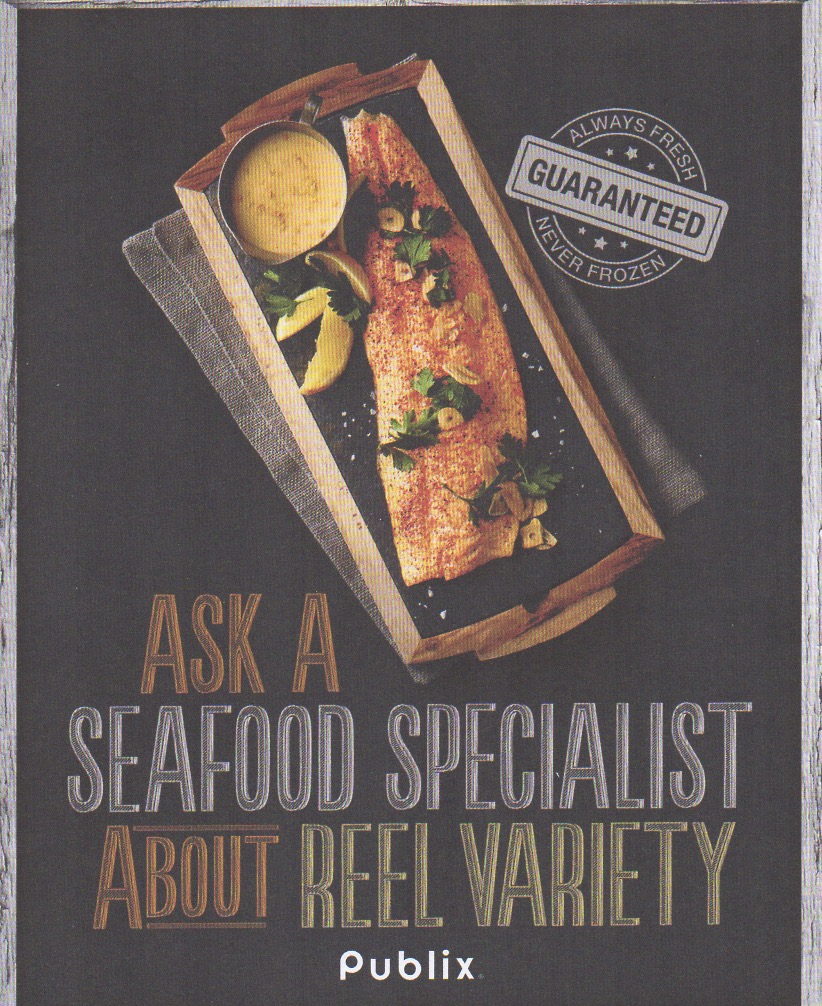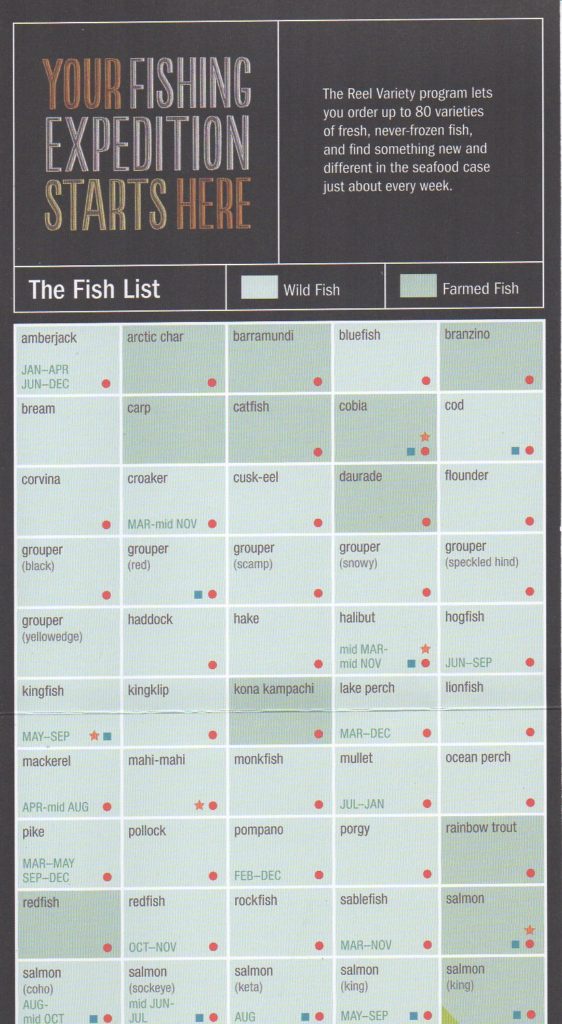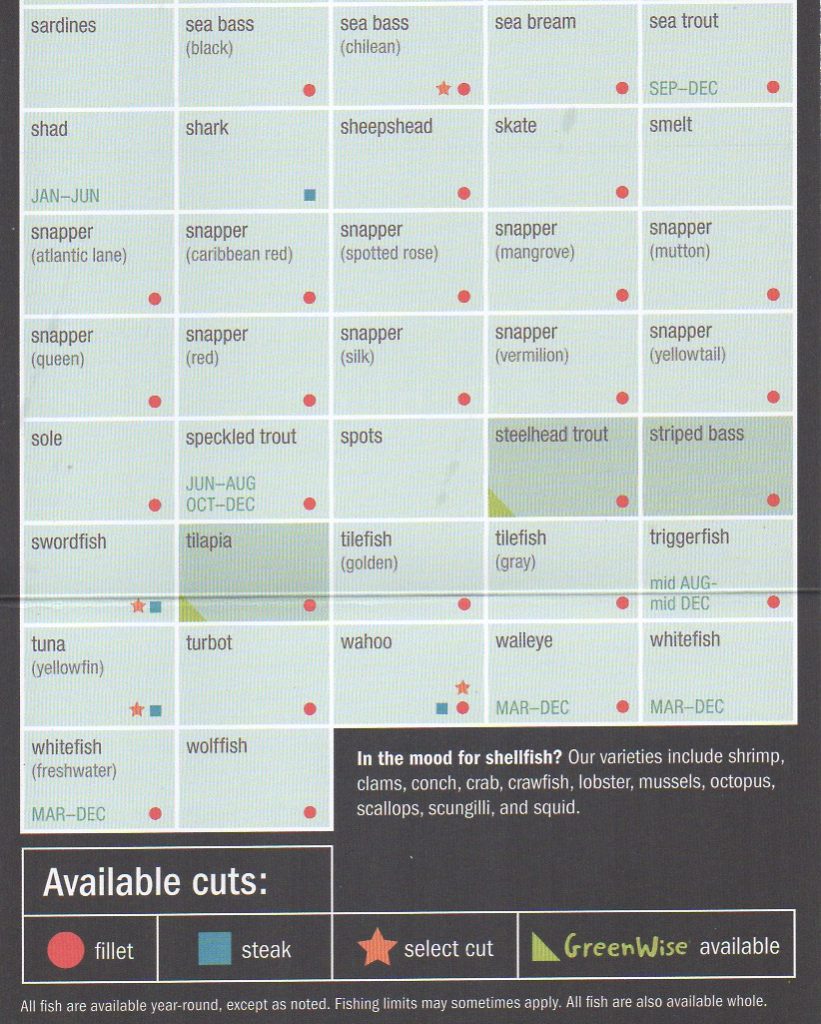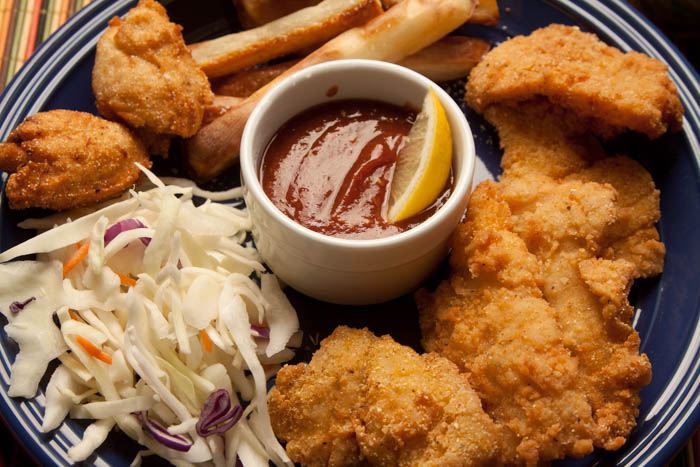Ask A Seafood Specialist About “Reel Variety” at Florida’s Largest Supermarket Chain (Recipe Included!)
“Florida Food” is all about seafood. And sources of fresh, healthy seafood can be found throughout our Natural North Florida region. In small coastal towns like Steinhatchee (Kathi’s Krabs), Cedar Key (Robinson‘s), Cross City (Rick’s) there are some great seafood stores. And in Gainesville, you can’t do much better than Northwest Seafood‘s two locations–one in town and the other on the west side at Tioga. At Kathi’s Krabs, Robinson’s and Northwest, they’ll even cook your purchases for you!
In recent years, even some of the bigger national chains have come to the region. In Gainesville, our largest city, Fresh Market and Whole Foods brought excellent seafood counters, and Lucky’s Market has a modest selection. But, until recently, Florida’s (and the southeast’s) largest supermarket chain, Publix, hasn’t been a major “player” in the fresh seafood business. Selections were varied and it seems like the chain wasn’t ready to make a commitment to seafood. However, things do change, and Publix is leading the way with their Reel Variety fresh seafood program.
Publix now keeps lots of very fresh seafood in their many stores in our region. You can find Publix supermarkets all along the I-10 (Live Oak and Lake City) and I-75 (Alachua and Gainesville) corridors. There are actually a dozen or more Publix stores in Gainesville, which should give visitors an idea of their popularity.
The Reel Variety program offers fresh seafood that can be ordered from local stores with a two to three day notice. The program includes common varieties of fish, like seatrout, swordfish and grouper, as well as some more obscure species like monkfish, tilefish and wolf fish. Here’s a list:
Cooking seafood is simple and the results are healthy. For example, seatrout are mild and flaky and take well to several preparation methods. Here’s a recipe for tender, fried trout from a recent Sportsman’s Kitchen column in Florida Sportsman magazine:
Tender is the Trout
by: Tommy Thompson, Food Columnist, Florida Sportsman Magazine
Seatrout lend themselves to several methods of preparation, but the southern tradition of deep-frying is likely a favorite. And there’s no reason that fried foods need be greasy. The use of light cooking oil, like peanut or canola, a simple breading and a hot fire will guarantee results that are crisp, flavorful, and surprisingly healthy.
You’ll have to make the decision whether or not you want to serve your fish as fillets or fingers, known as tenderloins in many areas. I’d recommend cutting out the bones from smaller fish and then fingering the thick part of the fillet. If you have big seatrout, picking out the sweet meat under the rib cage is worth the extra effort, so fry the fillets whole. Fillets are probably more appropriate as an entrée; fingers work well as appetizers or in po-boy style sandwiches.
While there are likely as many different types of breading and batters as there are fish in the sea, I prefer a simple coating made from cracker crumbs, plain flour and a dash of Cajun spices. It’s easy to make and apply–simply dredge your fish in it just as you’re getting ready to fry.
No matter how large the pieces of fish you cook, it’s important that they are put into oil that cooks them quickly. 350 to 375-degrees is the optimum temperature. If you don’t have a thermometer, simply touch the tip of a ready-to-cook piece of fish into the oil. If it sizzles, go ahead and start cooking. As you add additional fillets or fingers, you’ll cool the oil slightly, so it’s important not to cook too many pieces of fish at a time. When golden brown, your fish is ready to drain on absorbent paper and serve.
If you’re serving your trout in a ‘formal’ setting, consider hushpuppies, Cole slaw and oven-fried potatoes as accompaniments. This combination will likely earn you accolades comparing you to the best seafood restaurants in your hometown. A more casual presentation (That means you don’t have to use knives and forks!) is a simple sandwich made with fried fingers, and dressed with lettuce, tomato and tartar sauce.
Finally, remember that whether you serve your fish simple or fancy, the ‘secret’s in the sauce’. Making your own sauces is a simple alternative to store-bought. Try jazzing up your cocktail sauce with some hot peppers and remember that tartar sauce ain’t nothin’ but mayonnaise, chopped dill pickles and onion.
Foolproof Seafood Breading
- 1 cup all-purpose flour
- 1 boxed stack Saltine crackers (about 70 crackers)
- 1 tbsp. Cajun spice
Pulverize the crackers in a food processor; mix in flour and Cajun spice. Makes enough breading to coat about 2 pounds of trout fillets or fingers.
Tangy Seafood Sauce
- 1 12-ounce bottle Chili Sauce
- 1 7-ounce bottle Dat’l Do-it Datil Pepper Hot Sauce
- 2 tbsp. ground horseradish
Juice of a large lemon





